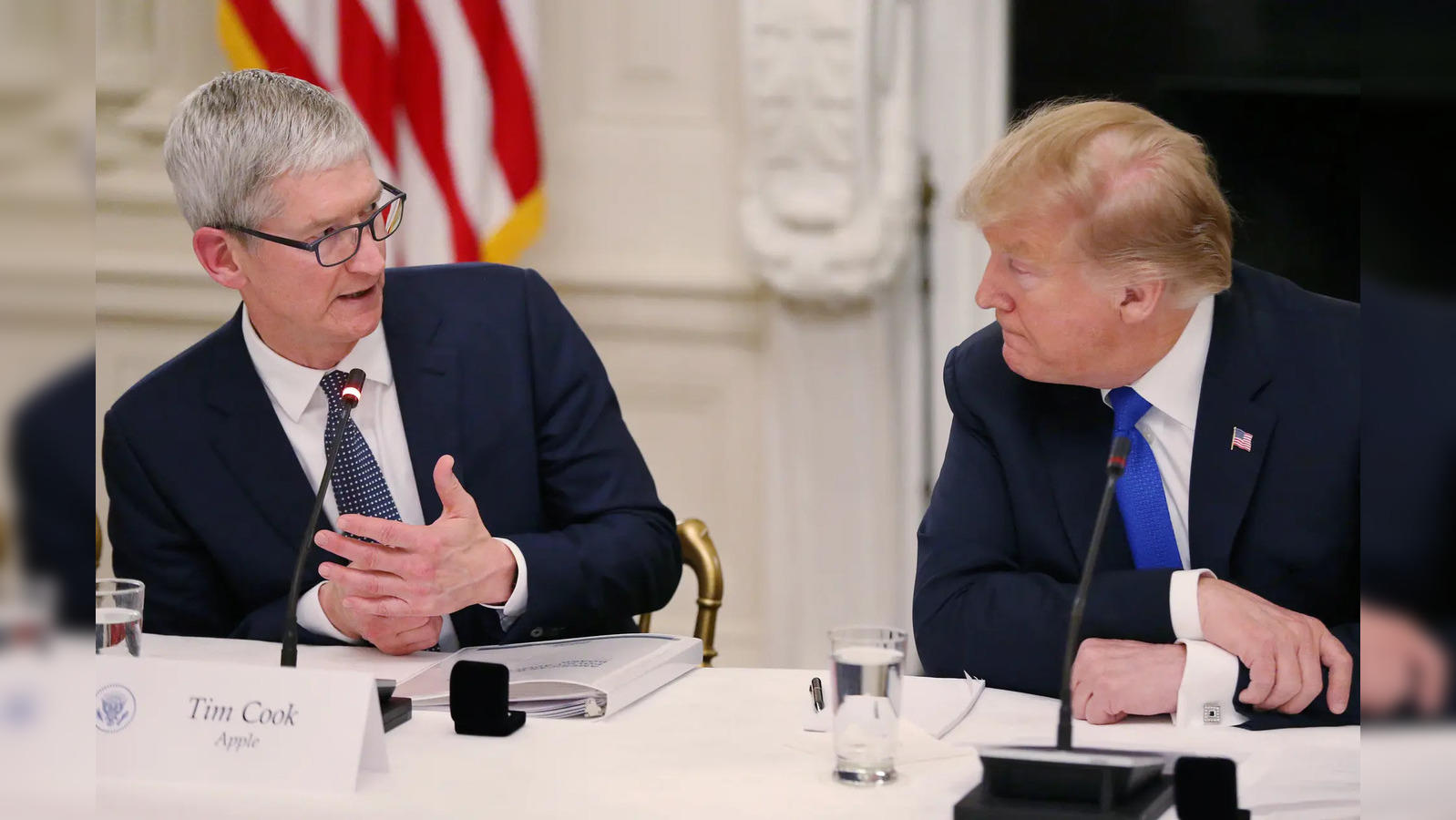US President-elect Donald Trump’s trade policies could drive a dramatic shift in Apple’s manufacturing operations from China to India, potentially impacting iPhone availability and costs for Indian consumers.
Apple Inc. may soon double its iPhone production in India to over $30 billion annually if US President-elect Donald Trump imposes high tariffs on Chinese imports, as he suggested during his campaign. Currently, approximately $15-16 billion worth of iPhones are produced in India, but escalating trade tensions between the US and China, coupled with Trump’s aggressive stance on tariffs, could lead Apple to increasingly shift its production to India, where it stands to gain significant financial benefits.
Trump’s Trade Stance: A Second Wave of Tariffs on China.
In his recent presidential campaign, Trump vowed to impose tariffs ranging from 60% to 100% on goods imported from China. Such tariffs aim to reduce America’s economic reliance on China, which has been a focal point in US trade discussions for several years. Trump’s first term (2016-2020) saw an unprecedented wave of tariffs aimed at China, sparking a global debate on trade policies and supply chains. This proposed policy shift could have profound implications for US-China relations and may lead companies like Apple to further diversify their manufacturing bases.
With this likely tariff shift, Apple could seek a major boost in its Indian operations, helping to cushion the impact of rising manufacturing costs in China. If India becomes Apple’s primary production hub, it could solidify Apple’s position as a leading manufacturer in India’s rapidly expanding tech industry.

India’s Role in Apple’s Supply Chain: Opportunities and Challenges.
India has already made significant strides in positioning itself as a global technology hub, and Apple’s increased investment would be a substantial endorsement of India’s manufacturing capabilities. The Indian government’s “Make in India” initiative and the Production-Linked Incentive (PLI) scheme provide incentives for companies to expand manufacturing within the country. These policies aim to attract foreign direct investment and promote self-reliance in critical sectors, including electronics.
However, scaling up production presents its own challenges. While India has made progress, it will need to strengthen infrastructure, streamline regulatory processes, and build a skilled workforce capable of meeting Apple’s high production standards. The success of this endeavor could make India a key player in the global electronics manufacturing landscape, with Apple leading the charge.
How Shifting Production to India Impacts iOS Users in India.
Apple’s expanded manufacturing base in India could bring tangible benefits to Indian consumers. Increasing local production is likely to result in cost savings, which Apple could potentially pass on to consumers, either through lower prices or enhanced product features. India-made iPhones are already priced more competitively, and a significant production increase could bring down prices further, making premium Apple products more accessible to a broader demographic.
Moreover, localized manufacturing could reduce India’s dependence on imports, thereby mitigating the effects of currency fluctuations and global supply chain disruptions on iPhone pricing. For iOS users in India, this shift could mean more consistent product availability, even during global supply chain disruptions.
Economic Impact: Boosting India’s Manufacturing and Export Capacities.
Apple’s expansion in India would not only contribute to the growth of its local supply chain but also foster the development of a high-skilled labor market. Increasing iPhone production from $15 billion to $30 billion would require a sizable workforce and an extensive network of local suppliers, fostering job creation and skills development in India’s electronics sector.
This shift would also benefit India’s export capacity, as some of the iPhones produced in India would likely be shipped to other markets. By establishing a robust manufacturing base, India stands to enhance its position as a global electronics exporter, especially in Asia, Europe, and potentially the Middle East.

Trump’s Influence on Apple’s Manufacturing Strategy.
Apple’s manufacturing strategy has long relied on China, but Trump’s tariff plans could fundamentally alter this dynamic. If Trump implements his proposed tariffs, Apple may expedite its relocation plans, making India a crucial link in its supply chain. This move would also align with Apple’s goal of reducing dependence on a single country, especially amid ongoing trade tensions.
For Apple, shifting its production to India presents a viable solution to avoid tariffs while capitalizing on a massive consumer market. India’s burgeoning smartphone market offers significant growth potential, and an increase in local production aligns with Apple’s strategy to increase its market share in the region.
Future Prospects: What Indian Consumers Can Expect.
The prospect of India becoming Apple’s main manufacturing hub could have several long-term implications for iPhone users in the country. With increased local production, iPhones could become more affordable for Indian consumers, encouraging a broader adoption of Apple products. This, in turn, could lead to a rise in iOS users and foster a larger ecosystem of Apple services and accessories in the region.
Furthermore, India’s growing role in Apple’s global supply chain may lead to faster launch times and shorter waiting periods for new products. Historically, India has received new Apple models after the US and European markets. With a greater share of production in India, new iPhone releases could reach Indian consumers sooner, enhancing their overall brand experience.
Strategic Implications for Apple’s Competitors.
Apple’s increasing commitment to India could create ripple effects for other technology giants as well. Rivals such as Samsung, Xiaomi, and OnePlus may be compelled to expand their own Indian operations to maintain competitiveness in one of the world’s largest smartphone markets. If Apple’s move proves successful, India could attract further investment from other global companies seeking a more resilient manufacturing base amid shifting global trade dynamics.
A New Chapter in Apple’s India Strategy.
With President Trump likely to impose hefty tariffs on Chinese imports, Apple’s decision to expand iPhone production in India could mark a pivotal shift in its manufacturing strategy. For India, this move signifies a vote of confidence from one of the world’s leading technology companies and underscores India’s potential as a global manufacturing powerhouse.
Indian consumers stand to benefit from improved accessibility to iPhones and Apple products, while the Indian economy could gain from enhanced employment opportunities and strengthened export capacities. As Apple doubles down on India, the future could bring more affordable iPhones, quicker launch times, and a more vibrant Apple ecosystem, reshaping the landscape of India’s smartphone market in profound ways.

